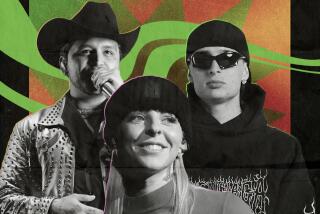Where bovines meet beboppers
- Share via
PUNTA DEL ESTE, Uruguay — Every summer they line up on the sides of the stage, chewing their cud as sweet notes of jazz float over the tranquil countryside. But the cows aren’t the only regulars at the Lapataia International Jazz Festival.
Top U.S. and Latin musicians come to play year after year in the pastures of a Uruguayan dairy farm, making the festival the top stop in South America on the world jazz circuit.
In the 11th annual festival this week, the Marsalis clan from New Orleans, the so-called first family of jazz, is represented by trombonist Delfeayo Marsalis’ quintet, which includes his younger brother and drummer, Jason.
Saxophonist Gary Bartz, who accompanied Miles Davis, and former Jazz Messengers pianist Cedar Walton have also made their way down to the tiny country of 3.4 million this year.
“You don’t have to explain what this festival is about to most musicians because they’ve come and want to return or because they heard about it and want to come for the first time,” said Francisco Yobino, the Argentine owner of the El Sosiego-Lapataia dairy farm.
Yobino -- whose farm is famous for dulce de leche, or the sweet milk caramel ubiquitous in these parts -- started the festival to expand the farm’s activities and draw visitors from Punta del Este, the beach resort down the road.
“This is the first time for me, and I have wanted to come for so many years because you can tell people put so much into it,” said Andres Boiarsky, an Argentine saxophonist who has lived in the United States for the last 20 years.
Over the years, half of the 300 musicians who have played here have come from the United States, including trumpeter Roy Hargrove and the Heath brothers, who played on the 10th anniversary last year.
But Latin jazz has also had a strong place on the program. Cuban saxophonist Paquito D’Rivera was musical director for the festival until last year, and his compatriot and pianist Bebo Valdes headlined the show.
The festival is also a chance for Argentine, Brazilian and Uruguayan jazz musicians to show their own styles.
“South American jazz is different from U.S. jazz, and this is an opportunity to establish jazz with a local accent, an interesting mixture with other styles, like with tango,” said Japanese pianist Tomoko Ohno.
More to Read
Sign up for The Wild
We’ll help you find the best places to hike, bike and run, as well as the perfect silent spots for meditation and yoga.
You may occasionally receive promotional content from the Los Angeles Times.






